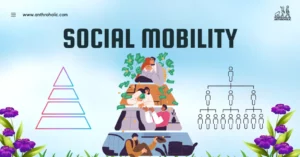AI Answer Evaluation Platform Live Now. Try Free Answer Evaluation Now
Multilingualism
Multilingualism is the ability to communicate in more than one language, whether fluently or to some extent. It is a common phenomenon around the world, with over half of the global population being bilingual or multilingual [1]. The merits of being multilingual range from cognitive benefits to a richer cultural understanding and better job prospects.

Demographics of Multilingualism
The multilingual population isn’t uniformly distributed globally. Certain regions have a higher concentration of multilingual individuals due to cultural diversity, colonial histories, or language policies.
| Region | Percentage of Multilingual Population |
|---|---|
| Africa | 50-90% |
| Europe | 45-70% |
| Asia | 30-60% |
| North America | 20-40% |
| South America | 20-40% |
| Oceania | 15-35% |
These figures are estimated, as exact statistics vary depending on sources and definitions of multilingualism [2].
The Benefits of Multilingualism
Cognitive Advantages
Research has suggested that multilingual individuals may enjoy cognitive benefits:
- Improved problem-solving skills: Multilinguals often perform better in tasks requiring cognitive flexibility, such as problem-solving [3].
- Enhanced attention control: Regularly switching between languages exercises the brain, improving focus and attention span [4].
Social and Cultural Benefits
- Enhanced cross-cultural understanding: Multilinguals often have a broader worldview and can navigate different cultures with ease [5].
- Increased empathy: Multilinguals are more likely to understand and empathize with people from different linguistic backgrounds [6].
Economic Advantages
- Job market edge: Knowing multiple languages can open up more job opportunities, both at home and abroad.
- Higher income potential: In many industries, multilingual employees earn more than their monolingual counterparts [7].
The Process of Becoming Multilingual
Learning at a Young Age
Children can acquire multiple languages simultaneously, especially if they’re exposed to different languages at home or school.
- Immersion: In this approach, a child is exposed to two or more languages in their daily life.
- Sequential learning: A child first masters one language and then learns another. This usually occurs when a child starts learning a second language at school [8].
Adult Language Acquisition
Learning a new language as an adult can be more challenging, but it’s certainly possible. Approaches include:
- Language courses: Formal education through language schools or universities.
- Self-teaching: Using language learning apps, books, or online resources.
- Immersion: Living in a region where the target language is spoken.
Regardless of the method, persistence and practice are key to becoming fluent.
The Future of Multilingualism
With increased global connectivity and migration, multilingualism is set to rise. It has even begun to shape technology, with the development of language translation software and AI-powered language tutors.
Multilingualism also plays a significant role in global issues. For example, the United Nations actively promotes multilingualism to ensure inclusive communication in its initiatives [9].
Multilingualism and Technology
As our world increasingly relies on technology for communication, there is a growing intersection between multilingualism and technology.
Language Translation Tools
Language translation tools are now a common part of digital life, enabling people to understand content in languages they do not speak. While these tools are not perfect, their continual improvement has had a profound impact on global communication [10].
Artificial Intelligence and Language Learning
Artificial Intelligence (AI) has become a game-changer in language learning. Apps powered by AI can offer personalized learning experiences, which can adapt to the learner’s level and pace, making the language learning process more efficient and engaging [11].
Natural Language Processing
Natural Language Processing (NLP), a subfield of AI, enables computers to understand, interpret, and generate human language. It is a crucial technology in building intelligent systems that can interact with humans in multiple languages, further promoting multilingualism [12].
Multilingualism and Globalization
Multilingualism plays a vital role in the process of globalization. In an increasingly interconnected world, the ability to communicate in multiple languages becomes more valuable.
Multilingualism in International Organizations
International organizations like the United Nations (UN), European Union (EU), and Association of Southeast Asian Nations (ASEAN) have multilingual policies to cater to their diverse member countries. These organizations often use multiple official languages to ensure inclusivity and effective communication [13].
Multilingualism in the Global Business Landscape
In the business world, multilingualism can be a competitive advantage. Companies with multilingual employees are more capable of tapping into international markets, creating global partnerships, and understanding diverse consumers [14].
Conclusion
Multilingualism is a valuable skill that brings a host of benefits, from cognitive enhancements to better job prospects. As our world becomes increasingly interconnected, the ability to speak multiple languages will continue to gain importance.
References
[1] Grosjean, F. (2010). Bilingual: Life and Reality. Harvard University Press.
[2] Romaine, S. (2018). Language in Society: An Introduction to Sociolinguistics. Oxford University Press.
[3] Adesope, O.O., Lavin, T., Thompson, T., & Ungerleider, C. (2010). A Systematic Review and Meta-Analysis of the Cognitive Correlates of Bilingualism. Review of Educational Research, 80(2), 207–245.
[4] Bialystok, E., & Craik, F.I.M. (2010). Cognitive and Linguistic Processing in the Bilingual Mind. Current Directions in Psychological Science, 19(1), 19–23.
[5] Alladi, S., Bak, T.H., Duggirala, V., Surampudi, B., Shailaja, M., Shukla, A.K., Chaudhuri, J.R., & Kaul, S. (2013). Bilingualism Delays Age at Onset of Dementia, Independent of Education and Immigration Status. Neurology, 81(22), 1938–1944.
[6] Fan, S.P., Liberman, Z., Keysar, B., & Kinzler, K.D. (2015). The Exposure Advantage: Early Exposure to a Multilingual Environment Promotes Effective Communication. Psychological Science, 26(7), 1090–1097.
[7] Callahan, R., & Gándara, P. (2014). The Bilingual Advantage: Language, Literacy and the US Labor Market. Multilingual Matters.
[8] Genesee, F. (2009). Early Childhood Bilingualism: Perils and Possibilities. Journal of Applied Research on Learning, 2(Special Issue), Article 2.
[9] United Nations. (2023). Language and the United Nations. Retrieved from https://www.un.org/en/our-work/official-languages
[10] Lewis, M. P., Simons, G. F., & Fennig, C. D. (Eds.). (2016). Ethnologue: Languages of the World. SIL International.
[11] Chen, J. (2018). The rise of AI in language learning. EAI Endorsed Transactions on e-Learning, 5(17).
[12] Jurafsky, D., & Martin, J. H. (2019). Speech and Language Processing. Prentice Hall.
[13] Ammon, U. (2016). Language Planning and Policy in Europe. Multilingual Matters.
[14] Tietze, S., & Piekkari, R. (2015). Language in International Business: The Multilingual Reality of Global Business Expansion. Edward Elgar Publishing.




